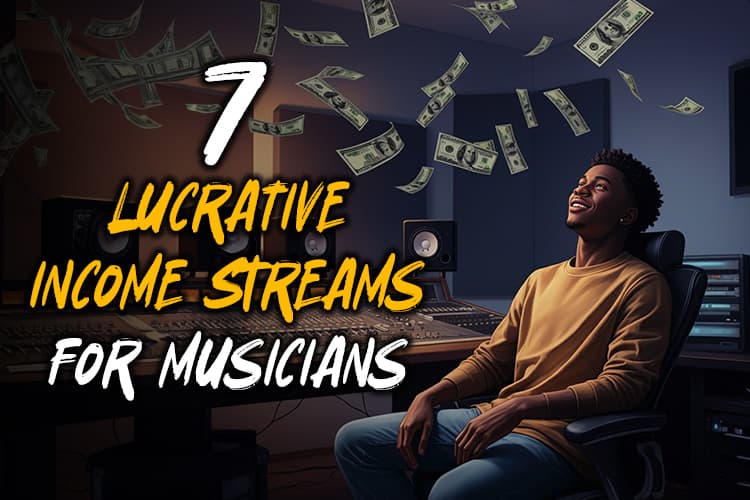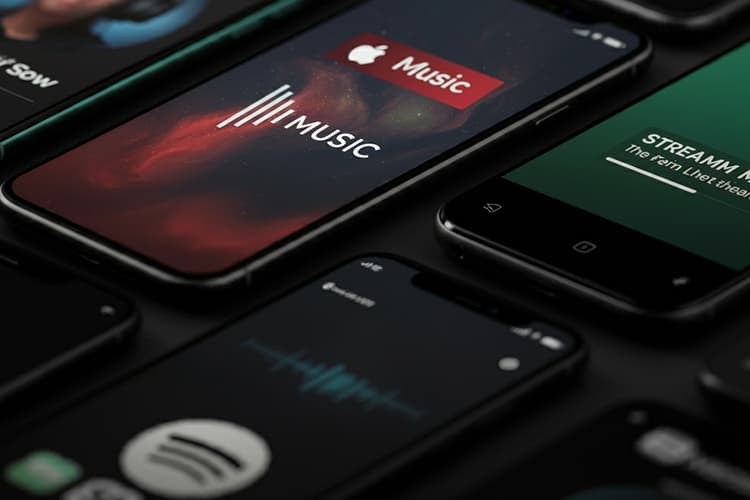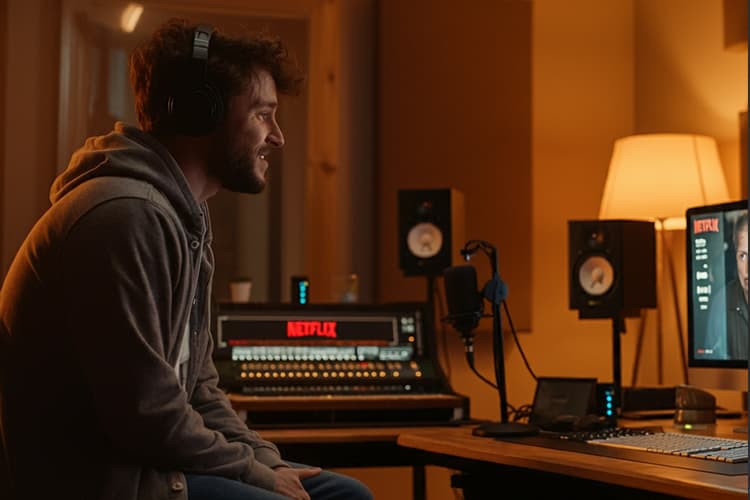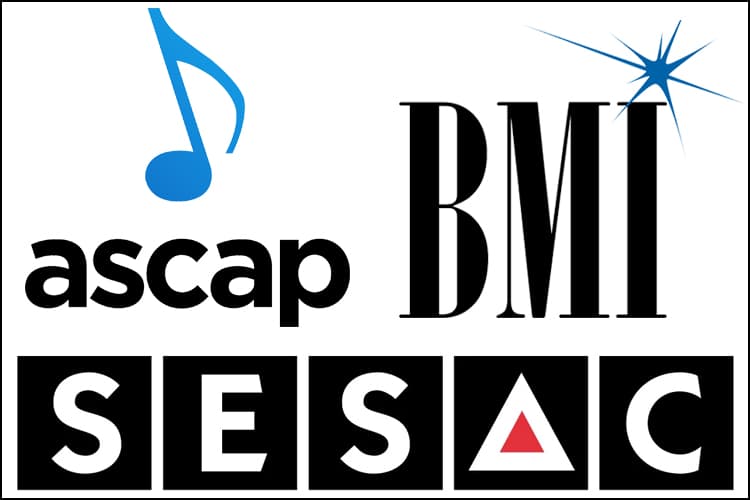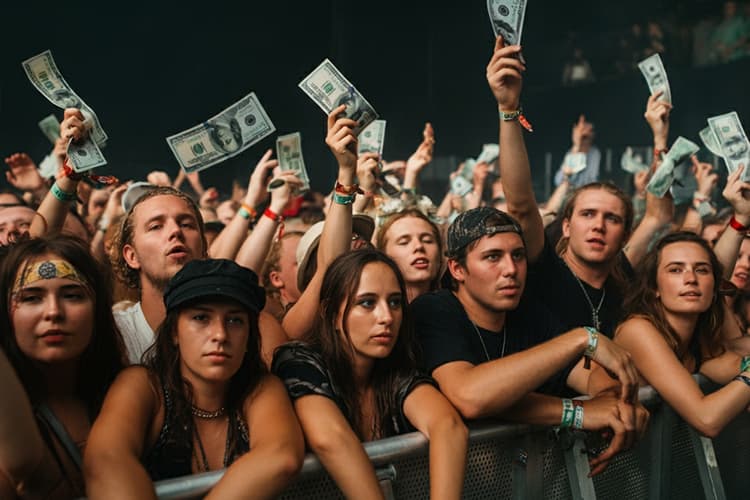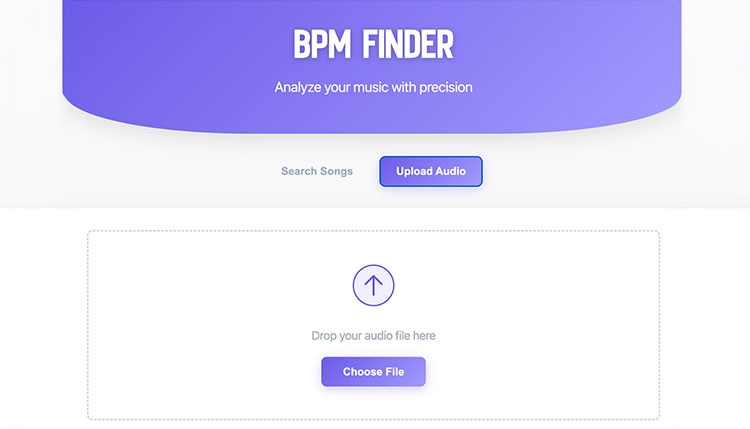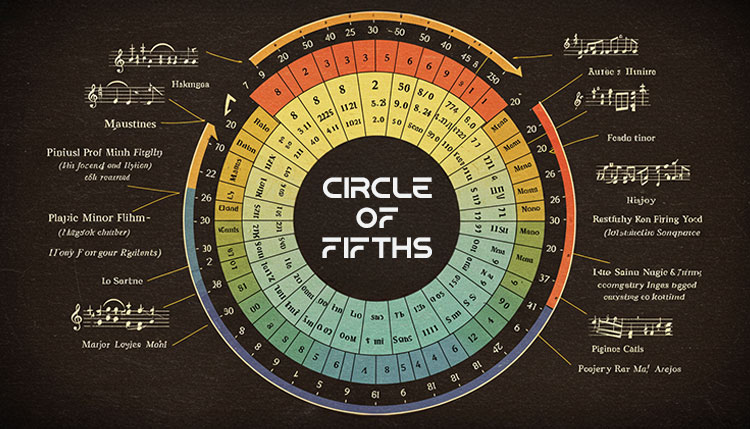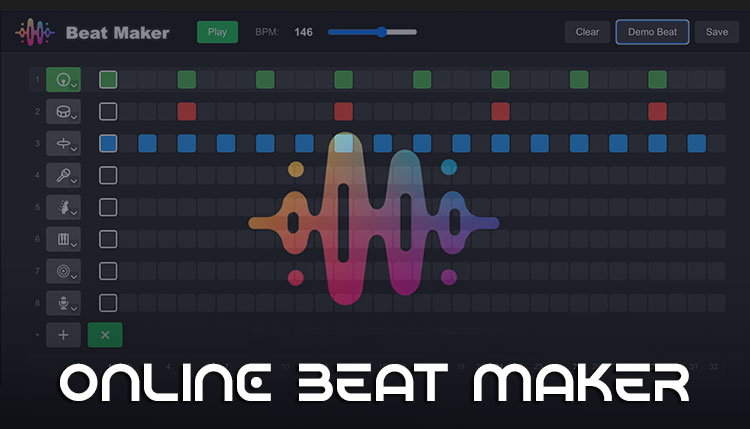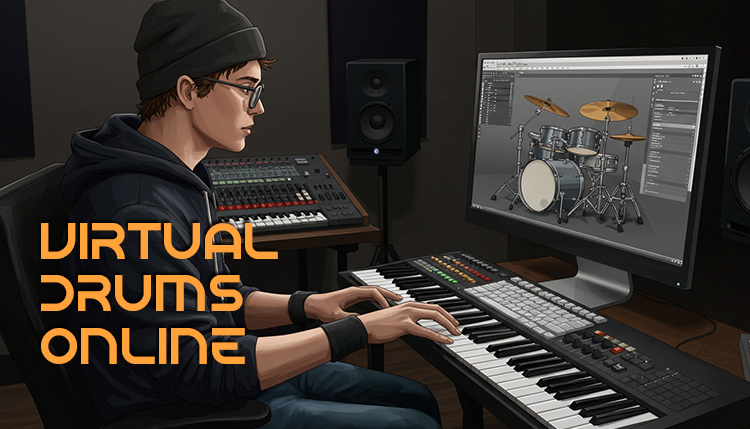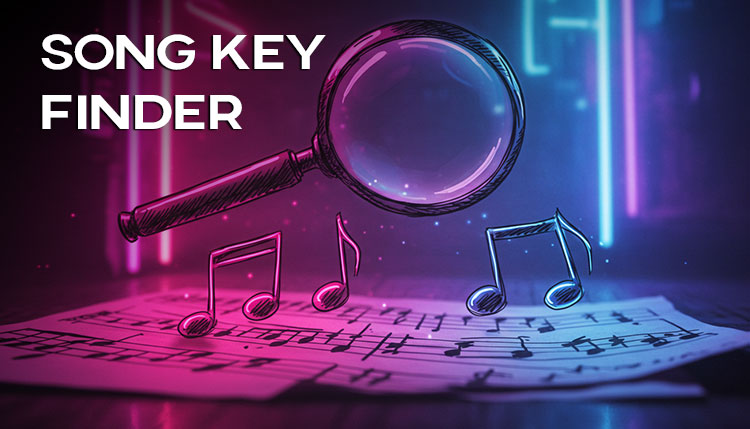Hey there, fellow music makers! Did you know that the average musician earns $35,300 annually from their craft?
But here’s the kicker – top-earning musicians don’t rely on just one income stream. They’re masters at diversifying their revenue sources.
In this article, we’ll explore 7 lucrative income streams for musicians that can help you turn your passion into a thriving music career.
Let’s dive in and unlock the secrets to financial success in the music industry!
1. Streaming Royalties: The Digital Goldmine
Alright, let’s dive into the world of streaming royalties!
I gotta tell ya, when I first started out in music, I had no clue how this stuff worked.
I remember uploading my first EP to Spotify and thinking I’d be rolling in dough by the end of the week. Boy, was I in for a rude awakening!
So, here’s the deal with streaming platforms and how they pay artists. It’s not as straightforward as you might think.
Each platform has its own formula, but generally, they divvy up a portion of their revenue based on the number of streams an artist gets.
It’s like a pie, and your slice depends on how many people are listening to your tunes.
Now, here’s where it gets tricky. The amount you get per stream is tiny. We’re talking fractions of a cent here.
I remember checking my first royalty statement and thinking there must’ve been a mistake. Nope, that’s just how it is.
But don’t get discouraged! The key is to rack up those streams.
So, how do you maximize your streaming revenue?
Here are a few tips I’ve picked up along the way:
- Focus on playlist placement. Getting your tracks on popular playlists can skyrocket your streams.
- Engage with your fans on social media. The more active your fanbase, the more likely they are to stream your music regularly.
- Release music consistently. Algorithms love fresh content!
Speaking of algorithms, they’re like the secret sauce of streaming platforms. These complex systems decide which tracks to recommend to listeners.
It’s kinda like having a robot DJ working for you 24/7. Pretty cool, right?
But here’s the thing – cracking the algorithm code ain’t easy.
I’ve spent countless hours trying to figure it out, and just when I think I’ve got it, they go and change something.
It’s enough to make you wanna pull your hair out!
One strategy that’s worked for me is focusing on creating quality music first and foremost.
Sounds obvious, right? But you’d be surprised how many folks get caught up in trying to game the system and forget about the actual music.
Another tip: don’t put all your eggs in one streaming basket.
While Spotify might be the big kahuna, don’t ignore other platforms like Apple Music, Amazon Music, or even YouTube Music. Each has its own audience and potential for discovery.
Lastly, don’t forget about your streaming profile. Make sure it’s up to date with a good bio, recent photos, and links to your social media.
You never know when a potential fan might stumble across your profile and decide to hit that follow button!
Remember, streaming royalties are just one piece of the puzzle when it comes to making money in music.
But it’s an important piece, and one that’s only gonna get bigger as time goes on. So, keep at it, stay creative, and who knows?
Maybe your next track will be the one that breaks the algorithm and sends those royalties through the roof!
2. Live Performances: Connecting with Fans in Person
Alright, let’s talk about live performances! This is where the rubber meets the road in the music biz.
There’s nothing quite like the energy of a live show, am I right?
I remember my first gig – I was so nervous I thought I was gonna hurl!
But once I hit that stage, it was like magic. The connection with the audience, the rush of adrenaline… man, there’s nothing like it!
Now, when it comes to live gigs, there are a few different types you should know about.
You’ve got your standard concerts, of course. These can range from tiny club shows to massive arena spectacles.
Then there are festivals, which can be a great way to reach new fans and network with other musicians.
And don’t forget about private events! These can be a real goldmine if you play your cards right.
Let’s break it down a bit:
- Concerts: These are your bread and butter. Whether you’re headlining or opening for someone else, this is where you can really showcase your music.
- Festivals: A great way to get exposure to a wider audience. Plus, the vibe is usually pretty awesome!
- Private events: Weddings, corporate gigs, birthday parties – these can be lucrative, but make sure you’re clear on what’s expected of you.
Now, here’s where things can get a bit tricky – negotiating performance fees and contracts.
I’ll be honest, I’ve made some mistakes in this area. Like that time I agreed to play a gig for “exposure” and ended up losing money on gas and equipment rental. Learn from my fail, folks!
When it comes to negotiating, don’t be afraid to ask for what you’re worth.
Do some research on what similar acts in your area are charging.
And always, always get it in writing! A verbal agreement ain’t worth the paper it’s not written on.
Here are a few tips for negotiating:
- Be professional. Even if you’re dealing with a friend, treat it like a business transaction.
- Be clear about what you’re offering. How long will you play? Will you bring your own equipment?
- Don’t be afraid to walk away if the terms aren’t right. Sometimes, no gig is better than a bad gig.
Now, let’s talk about merchandising at live events. This can be a real game-changer when it comes to making money from your music.
I remember the first time I sold a t-shirt at a show – it felt like I’d won the lottery!
Merch sales can sometimes make you more money than the actual performance fee, especially when you’re just starting out.
T-shirts, CDs, vinyl, stickers – fans love this stuff! It’s not just about the money either.
Merch helps create a connection with your fans and gives them a way to support you beyond just buying tickets.
A few tips for merch sales:
- Keep your prices reasonable. You want fans to be able to afford your stuff!
- Have a variety of items at different price points.
- Make sure your merch table is well-lit and easy to find.
- Consider having a card reader for those cashless fans.
Remember, live performances are about more than just playing music. They’re about creating an experience for your fans.
So put on a great show, connect with your audience, and don’t forget to have fun! After all, if you’re not enjoying yourself up there, why should anyone else?
3. Sync Licensing: Getting Your Music in Film and TV
Alright, let’s dive into the world of sync licensing.
This is one of those areas of the music biz that can seem a bit mysterious at first, but trust me, it’s worth getting your head around.
So, what exactly is sync licensing? Basically, it’s when your music gets “synchronized” with visual media – think TV shows, movies, commercials, even video games.
And the best part? It can be a serious money maker if you play your cards right.
Now, I’ll be honest, breaking into the sync world ain’t easy. It can take a while to figure out how it all works.
But once you do, it can open up a whole new revenue stream for your music.
Here’s the basic process:
- A music supervisor (that’s the person in charge of finding music for a project) needs a track for a specific scene.
- They reach out to publishers or licensing companies looking for the right song.
- If your track fits the bill, you negotiate a fee for its use.
- Your music gets placed in the show/film/commercial, and you get paid!
Sounds simple, right? Well, it can be, but there’s definitely a learning curve.
One of the biggest challenges is actually getting your music in front of the right people.
Music supervisors get bombarded with submissions, so standing out from the crowd is crucial.
So, how do you find sync licensing opportunities? Here are a few strategies:
- Sign up with a music library or licensing company. They have existing relationships with music supervisors and can pitch your tracks for you.
- Network, network, network! Attend industry events, join online communities, make connections.
- Create music with sync in mind. This doesn’t mean compromising your artistic vision, but understanding what kinds of tracks work well for sync can be helpful.
Now, let’s talk about maximizing your revenue from sync deals.
First off, make sure you own all the rights to your music. If you’ve sampled anything or co-written with someone, get that sorted out before you start pitching for sync.
Also, don’t be afraid to negotiate! The first offer isn’t always the best offer.
But remember, sometimes a lower-paying placement in a popular show can lead to more opportunities down the line.
One thing I’ve learned the hard way – always read the fine print!
I once signed away more rights than I intended to because I didn’t thoroughly review a contract. Don’t make the same mistake I did!
Here are a few more tips for sync success:
- Create instrumental versions of your tracks. These are often in high demand for sync.
- Keep your metadata clean and organized. Music supervisors need to be able to quickly find info about your tracks.
- Be patient. Sync deals can take a while to come through, but when they do, it’s worth the wait!
Remember, sync licensing isn’t just about the money (although that’s nice!). It’s also a great way to get your music heard by new audiences.
You can gain a ton of fans from people who hear your music in their favorite TV show and looked you up afterward.
So, don’t be discouraged if it takes a while to break into the sync world.
Keep creating, keep networking, and keep putting your music out there. You never know when that big placement might come along!
4. Music Publishing: Earning from Your Compositions
Okay, let’s talk about music publishing. This is one of those areas that can make your head spin when you first dive in, but trust me, it’s worth understanding.
I remember when I first started out, I thought publishing was just for the big shots. Boy, was I wrong!
So, what exactly is music publishing? In a nutshell, it’s about managing the rights to your compositions.
This includes things like sheet music, licensing for covers, and yes, those sweet, sweet royalties. It’s like having a business manager for your songs.
Now, let’s break down the different types of publishing rights:
- Mechanical rights: These cover the reproduction of your song, like when it’s pressed onto a CD or vinyl.
- Performance rights: This is when your song is performed live or played on radio, TV, or in public spaces.
- Synchronization rights: Remember our chat about sync licensing? This falls under publishing too!
One of the most important steps in music publishing is registering with a Performing Rights Organization (PRO).
These are the folks who collect and distribute royalties when your music is performed or played publicly.
In the US, you’ve got ASCAP, BMI, and SESAC. I’m with ASCAP myself, but they all do pretty much the same job.
Registering with a PRO is pretty straightforward, but there are a few things to keep in mind:
- You can only be a member of one PRO at a time.
- Make sure you register all your songs. I once missed out on royalties because I forgot to register a track. D’oh!
- Keep your contact info up to date. You don’t want those royalty checks going to your old address!
Now, let’s talk about co-writing. This can be a great way to expand your network and create music you might not have come up with on your own. But it can also get a bit… complicated when it comes to publishing.
Here are a few tips for co-writing:
- Always discuss publishing splits upfront. It’s way easier to have this conversation before you’ve written a hit!
- Get everything in writing. A simple email agreement can save you a lot of headaches down the line.
- Be fair. If you contributed equally to a song, a 50/50 split is usually the way to go.
I remember my first co-writing session. I was so excited about the song we’d created that I completely forgot to talk about publishing splits. Rookie mistake!
We sorted it out eventually, but it could have been a lot smoother if we’d discussed it upfront.
One thing to keep in mind with publishing is that it’s a long game.
Unlike streaming or live performances, where you see results pretty quickly, publishing royalties can take a while to come in.
But when they do, it’s like finding money you forgot you had!
Here are a few more tips for maximizing your publishing income:
- Consider working with a publishing company. They can help place your songs and handle the admin work.
- Don’t ignore international markets. Your music might be a hit in a country you’ve never even visited!
- Keep creating! The more songs you have out there, the more potential income streams you’re creating.
Remember, as a songwriter, your compositions are your assets. Treat them like the valuable property they are.
With smart management and a bit of luck, your songs could be earning you money for years to come.
So keep writing, keep creating, and don’t forget to dot those i’s and cross those t’s when it comes to publishing!
5. Merchandise: Beyond the Music
Alright, let’s chat about merchandise. This is where you get to flex those creative muscles beyond just your music.
And let me tell you, it can be a real game-changer when it comes to making money as a musician.
So, what exactly counts as merch? Well, pretty much anything you can slap your name or logo on!
T-shirts are the classic, of course, but don’t limit yourself. I’ve seen bands sell everything from coffee mugs to underwear. Get creative!
When it comes to creating branded merchandise, here are a few tips I’ve picked up along the way:
- Quality matters. Cheap merch might save you money upfront, but it won’t do you any favors in the long run.
- Design is key. If you’re not a graphic designer yourself, it might be worth investing in one. A great design can make the difference between merch that flies off the shelves and merch that… well, doesn’t.
- Know your audience. What would your fans actually want to buy and use?
Now, let’s talk about selling your merch. You’ve basically got two options: online and offline sales. Both have their pros and cons.
Online sales are great because they’re always open. If don’t have a website build one. Check out the best website builder for musicians if you need some help. By getting online fans can buy your stuff anytime, anywhere. Plus, you can reach a global audience.
The downside? Shipping can be a pain, and you miss out on that face-to-face interaction with fans.
Offline sales, like at gigs or festivals, give you that personal touch. Plus, there’s something about the excitement of a live show that makes people more likely to buy.
The catch? You’ve gotta lug all that merch around, and you’re limited to selling to the people who are physically there.
I’ve had success with both methods, but I gotta say, there’s something special about selling merch at shows.
I remember one gig where we sold out of t-shirts before we even played our first song! Talk about a confidence booster.
Here are a few tips for selling merch at shows:
- Have a variety of items at different price points.
- Make sure your merch table is well-lit and easy to find.
- Consider bundle deals to encourage larger purchases.
- Have a card reader! You’d be surprised how many sales you can lose if you’re cash-only.
Now, let’s talk about collaborating with designers and manufacturers. This can be a bit daunting at first, but it’s worth it to get high-quality merch.
When working with designers:
- Be clear about what you want, but also be open to their ideas. They’re the experts, after all!
- Make sure you have the rights to use any images or fonts in your designs.
- Get multiple mockups before finalizing a design.
As for manufacturers:
- Shop around for quotes. Don’t just go with the first option you find.
- Ask for samples before placing a big order.
- Consider eco-friendly options. Fans are increasingly conscious about sustainability.
One last thing – don’t forget about limited edition merch! This can be a great way to create buzz and encourage sales.
I once did a run of 50 hand-numbered posters for a special show, and they sold out in minutes. People love having something unique!
Remember, merch isn’t just about making money (although that’s nice!). It’s also about building your brand and giving fans a way to show their support.
So have fun with it, be creative, and who knows? Your merch might become just as iconic as your music!
6. Teaching and Workshops: Sharing Your Expertise
Alright, let’s dive into the world of teaching and workshops.
This is a side of the music biz that doesn’t always get a lot of attention, but let me tell you, it can be a real game-changer.
Not just for your bank account, but for your skills as a musician too!
I remember the first time I taught a guitar lesson. I was so nervous, I thought I was gonna forget how to play!
But you know what? It ended up being one of the most rewarding experiences of my career.
There’s something special about sharing your knowledge and seeing that “aha!” moment in a student’s eyes.
So, let’s break this down into a few different areas
Private Lessons: This is where most of us start. One-on-one lessons are great for tailoring your teaching to each student’s needs. Plus, you can do these in person or online – hello, global student base!
Group Classes: More students, more money, right? It’s not just about the cash though. Group classes can be super fun and create a sense of community among your students.
Workshops: These are like the rock concerts of teaching. You get to share your knowledge with a bunch of eager learners all at once. Trust me, there’s always someone wanting to learn what you know!
Online Courses: This is where things get really exciting. Create a course once, sell it forever. It’s the ultimate passive income stream for musicians.
Here are some tips for getting started with teaching:
Start small. Maybe offer a few free lessons to friends to build your confidence. Create a curriculum. Even if it’s just a rough outline, it’ll help you stay organized.
Be patient. Remember, not everyone learns at the same pace. Keep learning yourself. The best teachers are lifelong students!
One of the coolest things about teaching is how it can improve your own skills.
Breaking down a technique and explaining over and over can improve your own understanding and execution.
Don’t forget about the business side of things. Set clear policies about cancellations, payment, and what’s included in your lessons.
And always, always be professional. Word of mouth is huge in the teaching world!
Remember, teaching isn’t just about the money. It’s about giving back to the music community and helping to shape the next generation of musicians.
And who knows? One of your students might end up being the next big thing. How cool would that be?
7. Crowdfunding and Fan Subscriptions: Harnessing Fan Support
Alright, let’s talk about our seventh income stream: crowdfunding and fan subscriptions.
This is where things get really interesting, folks. It’s like having your fans become your personal record label!
I remember when crowdfunding first hit the scene. I was skeptical. I mean, asking fans to fund your album before it’s even made? Seemed a bit cheeky to me. But boy, was I wrong!
My friends crowdfunding campaign was an eye-opener. Not only did he raise enough to record his album, but he also built this amazing connection with his supporters.
So, let’s break this down:
Crowdfunding: This is where you ask your fans to contribute to a specific project. It could be an album, a music video, or even a tour. Platforms like Kickstarter and Indiegogo are great for this.
Fan Subscriptions: Think of this as an ongoing crowdfunding campaign. Platforms like Patreon let fans support you on a monthly basis in exchange for exclusive content. It’s like having a fan club, but way cooler!
Here’s the thing about crowdfunding and subscriptions – it’s not just about the money. It’s about building a community around your music.
I’ve seen bands use these platforms to do everything from letting fans vote on set lists to hosting private online concerts.
Some tips for successful crowdfunding:
- Be realistic with your goals. Don’t ask for a million bucks to record a demo in your bedroom!
- Offer awesome perks. Signed merch, private concerts, even songwriting sessions – get creative!
- Keep your backers in the loop. Regular updates make them feel part of the journey.
- Be transparent about where the money’s going. Fans appreciate knowing they’re funding studio time, not your new hot tub!
Now, fan subscriptions are a bit different. It’s more of a long game.
Here’s what I’ve learned:
- Consistency is key. Your subscribers are paying monthly, so make sure you’re delivering value regularly.
- Offer different tiers. Some fans might want to chip in a buck a month for bonus content, others might be willing to pay more for personalized stuff.
- Don’t be afraid to experiment. Try different types of content and see what your fans respond to.
I gotta tell you, there’s something really special about having fans who believe in you enough to support your work directly. It’s humbling, and it pushes you to create your best stuff.
One word of caution though – don’t get so caught up in creating content for your subscribers that you neglect your main output. It’s a balancing act, for sure.
Remember, crowdfunding and fan subscriptions aren’t just for indie artists. I’ve seen established acts use these platforms to fund passion projects or to connect more deeply with their core fans.
At the end of the day, this income stream is all about turning your biggest fans into your partners.
It’s about creating a direct line between you and the people who love your music most.
And let me tell you, there’s no feeling quite like knowing you’ve got a whole crew of supporters backing your every move.
Income Streams for Musicians Wrap Up
Wow, what a journey through the world of income streams for musicians!
By diversifying your revenue sources, you’re not just increasing your earning potential – you’re building a more sustainable and resilient career in the music industry.
Remember, it’s not about pursuing every single income stream at once. Start with a few that align with your strengths and gradually expand.
Your future self will thank you for laying this groundwork today.
Now, go forth and create beautiful music – and a beautiful income to match!

